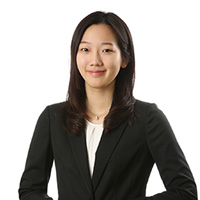Sitting down for authentic Korean meal before hitting the runway
Michelin-starred chef Yim Jung-sik combines classic dishes with new dining experience at an unlikely setting
By Im Eun-byelPublished : Jan. 19, 2018 - 17:03
The first Korean Michelin-starred chef Yim Jung-sik hopes to introduce a new perspective on everyday Korean food with Pyunghwaok, which opened at Incheon Airport’s new terminal Thursday.
“Foreign diners will be able to taste real Korean food from the entrance of Korea,” Yim said at Pyunghwaok, which means “peace house” in Korean, on Wednesday, ahead of its official opening. “For me, I can showcase my menu to a more diverse spectrum of people.”
The restaurant offers classic food of North and South Korea, such as eobokjaengban, or hot pot with boiled beef slices, and suyuk, or boiled pork, along with a relatively recent food trend in South Korea -- fried chicken.
“Foreign diners will be able to taste real Korean food from the entrance of Korea,” Yim said at Pyunghwaok, which means “peace house” in Korean, on Wednesday, ahead of its official opening. “For me, I can showcase my menu to a more diverse spectrum of people.”
The restaurant offers classic food of North and South Korea, such as eobokjaengban, or hot pot with boiled beef slices, and suyuk, or boiled pork, along with a relatively recent food trend in South Korea -- fried chicken.

“Fried chicken is a distinctively Korean menu item,” Yim said. “It would be smart to promote Korean food with it, as it appeals to many.”
Stepping out of his comfort zone -- the fine dining scene -- Yim selected the South’s gomtang (beef bone soup) and the North’s naengmyeon (cold noodles) as signature dishes. Customers can enjoy classic food and daily specials together through prix fixe menus.
“Many Asian dishes that have become worldwide hits are soups with carbohydrates, for example, Thai tom yum goong, Japanese ramen and Vietnamese pho,” he said. “In Korea, we generally add a bowl of rice to soup. It is a culture that could work in the market abroad.”
He plans to add the common Korean dish bibimbap (rice with assorted vegetables) to the list, customizing it for foreigners.
“The rice has to be mixed before being served as it could be hard for foreigners to do so,” the chef said. “We will add sesame leaves to the dish as foreigners like the vegetable’s unique fragrance.”

The restaurant has tweaked the serving of banchan, or side dishes, by placing pots of banchan on a large communal table in the middle of the restaurant.
“Banchan is a symbol of Korean dining culture. Foreigners are awed by the custom, with the delight of getting food that one did not order,” he said. “They can experience Korea’s dining culture.”
Yim is confident that the restaurant at the airport will success in attracting foreign diners.
“Jungsikdang (The chef’s Michelin-starred restaurant in Seoul) started out with domestic customers,” he said. “But now more than 80 percent of the diners are foreigners. Through the right publicity, foreign customers will come to recognize Pyunghwaok.”
Yim emphasized that the restaurant’s concept distinguishes it from other Korean dining spots. “(The name of the food) at the airport’s food court might be similar. But they are totally different in concept,” he said.
For Yim, there is more to running a restaurant than preparing good food. He worked on setting the perfect atmosphere for a Korean dining experience.
The chef designed the stainless tableware used at the restaurant, “dreaming about the new future of stainless.” The dishes, cups and bowls are all inspired by traditional Korean ceramics.
Pyunghwaok signals Yim’s switch from “new Korean dining” to “authentic Korean dining,” promising a new experience of classic dishes.
“I feel a sense of threat as a fine dining chef. Being aware that there is a decline in demand for high-end dining, I looked for new options,” he said.
(silverstar@heraldcorp.com)


















